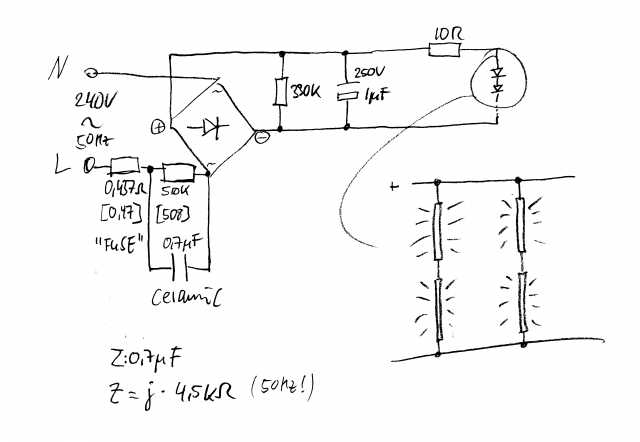I'm trying to power this LED filament bulb with a 12V - 2A DC wall adapter.
LED specs:
- rated at 4W
- 12 to 24V input
I'm pretty new to this, but if I get it right:
Calculus
- the LED bulb will draw E/V = 4/12 = 0.33A if power source is at 12V.
- by measuring voltage drop across LED bulb, I get a reading of 3V.
- to control current flowing in my circuit, I'm using 1W-rated resistors. I know voltage across resistors will be 12-3 = 9V.
- So I can deduct that resistors should generate a total resistance of V/I = 9/0.33 = 27 ohms.
- to do this, I wired 3 groups of resistors in parallel, each group being made of 4 20-ohm resistors in series. That way, I should get a 80-ohm resistance per group, and 80/3 = 26.6 ohms of total resistance. And this setup allows me to have I/V = 0.33/3 * 9/4 = 0.25W crossing each resistor, largely below their 1W rating.
Results
 When I power this circuit, the LED turns on and current crossing it is measured at 0.32V, but after a few seconds:
When I power this circuit, the LED turns on and current crossing it is measured at 0.32V, but after a few seconds:
- the voltage keeps dropping across LED
- voltage increases across resistors
- current increases across resistors
- resistors get warm
- LED slowly dims down
I assume that the generated heat from the resistors decreases their resistance, hence an increase in current and voltage crossing the resistors, leaving less and less current to LED. But I'm not sure, and if I'm right, I have no idea how to prevent that. I tried different resistor combinations, always trying to stay way below the resistors' 1W max rating, but it always ended up with voltage slowly decreasing through LED.
Any idea on how to fix that? Thanks in advance!

